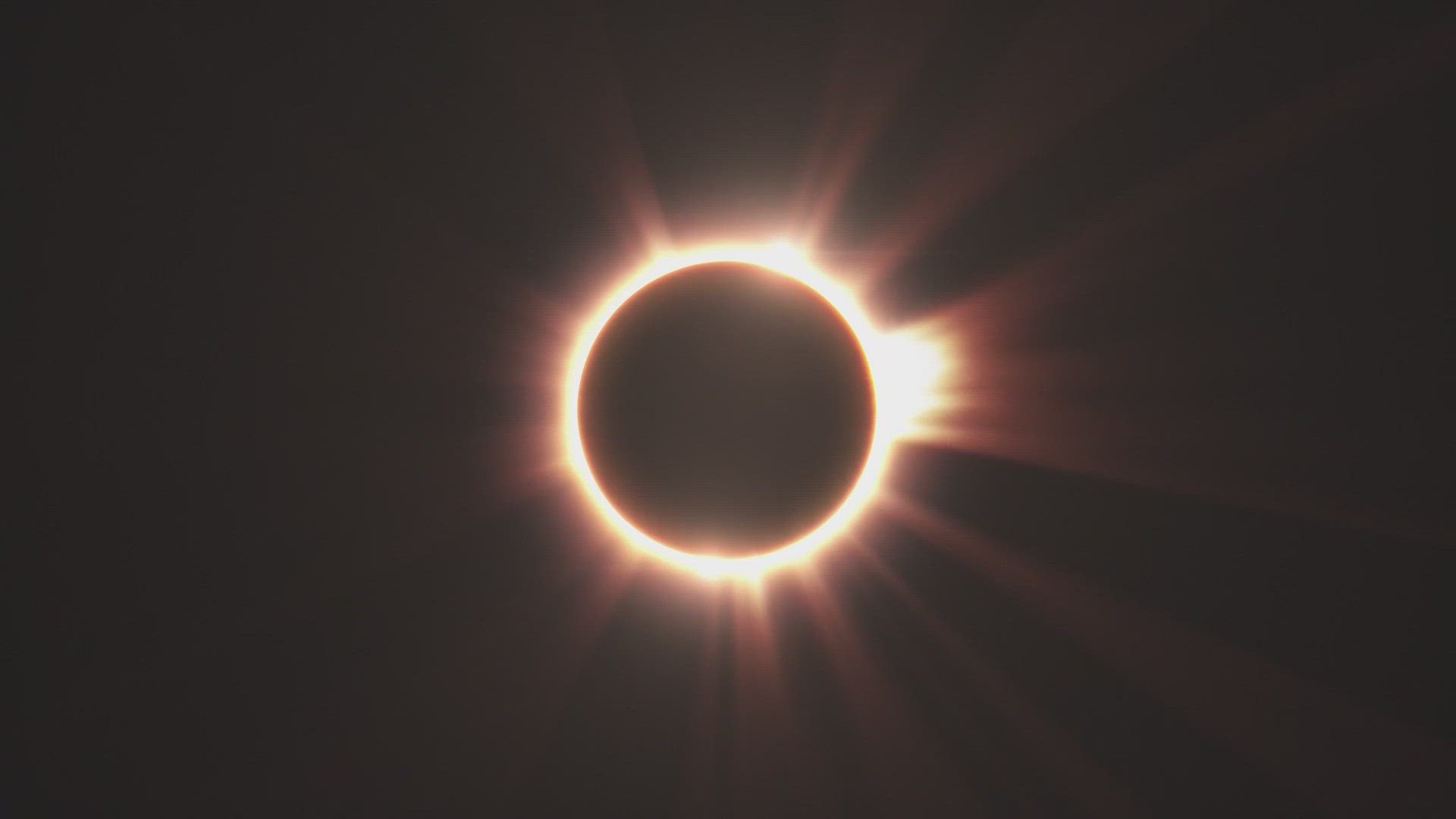SEATTLE — Will the weather cooperate when the moon briefly passes in front of the sun on Monday?
For western Washington, the odds are not looking great.
According to the KING 5 Weather Team, it will likely be cloudy over much of the region on Monday - between 70-80% cloud cover in most places.
Washington state will only see a partial eclipse on Monday, with 20% of the sun covered by the moon. The eclipse will start at 10:29 a.m. in Seattle, peak at 11:29 a.m. and end by 12:21 p.m.
The best spot to see what we can of the solar eclipse will be east of the Cascade Mountains. Wenatchee is forecasted to be partly cloudy, seeing 35%-50% cloud cover during the event.
Even for those in the path of totality (parts of the United States where the moon will fully cover the sun) the weather does not seem to be cooperating for a prime viewing experience.
The National Weather Service issued an eclipse forecast showing that much of the path will be overcast on Monday, with a whole swath of land from Texas to southern Arkansas and Ohio, northwest Pennsylvania and New York expected to see cloud cover. The NWS predicts that parts of northern New England and an area from northern Arkansas to central Indiana have the best chances of a cloud-free eclipse viewing experience.
How much can we see in Washington?
Although Washington state is not in the path of totality of the upcoming solar eclipse on April 8, the moon will still cover a portion of the sun from our perspective.
Here's how much of the eclipse you will experience depending on where you live in Washington state, according to TimeandDate.com:
- Seattle: 20.02%
- Tacoma: 20.37%
- Everett: 19.77%
- Port Angeles: 18.07%
- Spokane: 26.71%
- Pullman: 28.49%
In Seattle, the partial eclipse will begin at 10:29 a.m. and last until 12:21 p.m.
A solar eclipse happens when the moon passes between the sun and the earth, blocking some or all of the light cast on the earth's surface for a brief period.
The center of the shadow that the moon casts on the earth's surface (places where the sun's light is completely blocked) can be relatively small, sometimes only 50 miles wide, according to NASA. As the moon, the sun and the earth all move, the center of the shadow will travel across the earth's surface, creating what scientists call the path of totality.
However, the partial shadow can span thousands of miles to the east and west of the path of totality. For this eclipse, all of North and Central America will be able to see at least a partial eclipse, according to Space.com.
Watching the eclipse safely
Even when some of the sun's light is blocked by the moon, it is never safe to look directly at it.
For those who would like to observe the eclipse, people can purchase eclipse glasses, which are available online and in some retail stores.
People can also make homemade pinhole projectors.
NASA's Jet Propulsion Laboratory has provided a step-by-step guide for how to make one.

